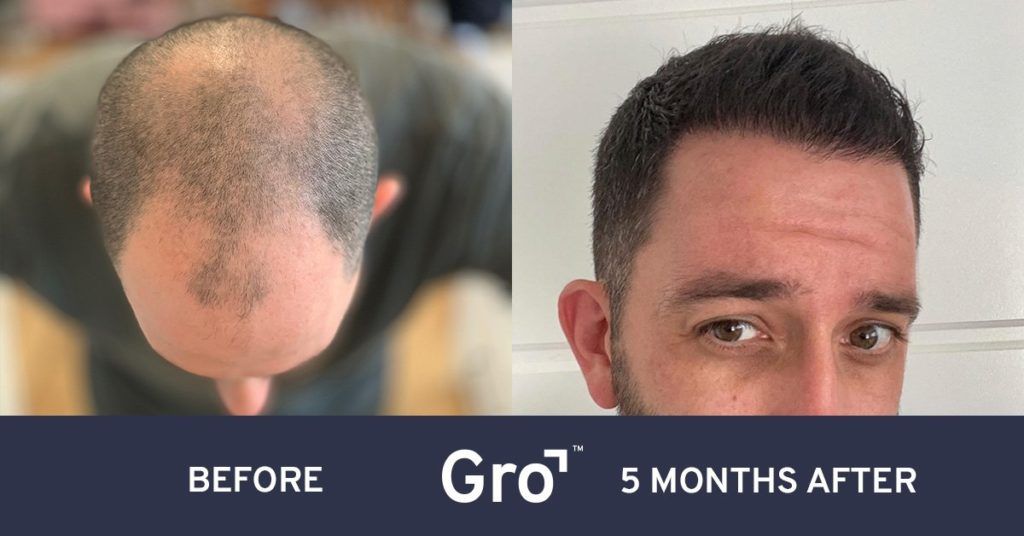When comparing hair transplant options, many people prioritise getting a good price. No wonder, a hair transplant is a big financial investment! However, sometimes a low price comes with risks not worth taking.
Clinics overseas offer low-cost hair transplants that can seem appealing to those with a lower budget. With international travel back on, this competition has some lower-end clinics in Australia panicking.
Finding the right hair transplant clinic requires a lot of research. Not only so you can get the best deal, but also the type of transplant you want (FUT, FUE or PFP), so the experience and results will match your expectations. Other important factors to a quality hair transplant include minimised pain, no scars and a natural-looking result that you'll be happy with for the rest of your life.
Different hair transplant methods explained
When comparing options, an understanding of the different methods is crucial.
Different hair transplant methods include:
Follicular Unit Transplant (FUT)
In FUT, a long thin strip of scalp is removed and divided into single follicles under a microscope. This method, also known as strip procedure, is mostly performed by technicians instead of doctors.
Afterward, the skin is sewn back together where the strip was removed. While an older technique, FUT is still fairly common in Australia as it cuts down the extraction time, making FUT a cost-effective method. However, it leaves a long thin scar that may be visible under short hair.
Follicular Unit Extraction (FUE)
In FUE, a punch is used to make a small circular cut in the skin around a hair follicle or group of follicles, leaving a small hole. The process is repeated until there are enough follicles to cover the treatment area. The holes heal to tiny white scars that may be undetectable depending on the doctor's skill level. With FUE, the scars are smaller and less visible than with FUT, which means they heal faster.
FUT and FUE differ in the extraction phase of the procedure. Donor follicles are implanted using the same methods for FUT and FUE. That is, creating reception holes in the treatment area and placing the hair follicles into the holes with forceps, allowing little control over the angle, direction and depth. Implantation is normally done by technicians, not by a doctor.
Precise Follicle Placement (PFP)
PFP is our signature hair transplant method here at Gro. The follicles are extracted with a specialised tool designed to minimise damage to the hair follicle and surrounding scalp tissue.
After extraction, individual follicles are kept at a constant temperature in a growth solution called HypoThermosol™ to maximise development and growth after implantation.
Hair follicles are implanted using a specialised implanter tool that allows the doctor to control the depth, direction and angle of each hair, creating a natural result. There's no need to create recipient holes in the treatment area, which helps obtain higher hair density and reduces scarring.
Why cheap Australian clinics can’t compete with overseas
Some clinics in Australia can't offer any point of difference to cheap overseas hair transplants, so they're forced to compete on price. To make up for it, there's often a cap on the number of transplanted follicles to cut costs. Many also also use the FUT method which is cost effective for the clinic, but results in a that may be visible under short hair. The scarring and potential overharvesting of the donor area may make it impossible to have a corrective hair transplant in the future.
The Gro difference
At Gro, only highly trained doctors perform hair transplants, guaranteeing the same quality and natural-looking results for every patient.
Cheap hair transplants can be damaging due to the cost-cutting tactics involved. When the donor area is not cared for properly and the extraction of follicles is too rough, scarring can occur. In some cases, the scarring may make any corrective treatment impossible due to the limited number of healthy donor follicles left.
Our specialised implanter tool has a diameter of less than 1mm, resulting in less trauma to the follicles and the surrounding skin. We also keep the follicles in a special growth solution to keep them viable while they are waiting to be implanted.
Important questions to ask
When choosing a hair transplant clinic, it's important to ask a lot of questions. This way, you can make sure you get the best possible results and value for your money. Here are some examples:
- What technique will be used? How will my follicles be extracted?
- Who will perform my procedure – a doctor, nurse or technician?
- What are the post procedure instructions and who do I contact in an emergency?
- What results can you achieve? What is your average follicle survival rate?
- Will I be able to have a second procedure in the future, if needed?
- Will the results look completely natural?
A low-cost hair transplant may not be low cost once you have factored in the risk of needing a corrective treatment or any follow-up medical assistance that may be required.
What should I do next?
If you want to know more about restoring your hair, the first step is to book a consultation with a specialist. Gro is Australia's leading provider of hair transplants, applying the safest and most advanced innovations in hair restoration technology. We help you to gro your hair back for life with no pain, no stitches and no scars.
Call us on 1300 787 563 and our team will be happy to answer any questions you have.
Ready to take the next step? We have Gro clinics all around Australia and New Zealand including:
- hair transplant clinic in Brisbane
- hair transplant clinic in Gold Coast
- hair transplant clinic in Sydney
- hair transplant clinic in Melbourne
- hair transplant clinic in Perth
- hair transplant clinic in Auckland
- hair transplant clinic in Pacific Fair

See pricing or check out more before and after photos.












